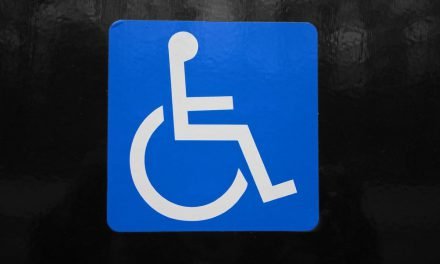This form is used by a homeowner to preserve the equity in their home from loss — due to a creditor’s foreclosure on a judgment lien recorded after the declaration — in the dollar amount of the homestead exemption the owner qualifies to claim.
Two types of homestead procedures are available to California homeowners:
- the declaration of homestead, which is recorded [Calif. Code of Civil Procedure 704.920; See RPI Form 465]; and
- the automatic homestead, also called a statutory homestead exemption, which is not recorded. [CCP §704.720]
The recorded declaration of homestead
A declaration of homestead is a recorded statement designating a particular dwelling as the owner’s principal place of residence.
The declaration gives a homeowner priority rights to preserve the equity in their home from loss — due to a creditor’s foreclosure on a judgment lien recorded after the declaration — in the dollar amount of the homestead exemption the owner qualifies to claim. [CCP §§704.910, 704.995; See RPI Form 465]
For a homeowner to qualify for a declaration of homestead:
- they need to occupy the home as their principal residence at the time a judgment is recorded; and
- when married, at least one spouse needs to continually reside in the home until the court determines their home is a homestead. [CCP 704.710(c)]
The recorded homestead declaration includes:
- the name of the homeowner declaring the homestead;
- a description of the property homesteaded; and
- a statement that the declared homestead is the principal dwelling in which the homeowner resides on the date the homestead is recorded. [CCP §704.930(a)]
The declaration is signed, notarized, and recorded before it is effective. [CCP §704.930]
The homestead declaration may be signed and recorded by any one of several individuals, including:
- the owner of the homestead;
- the owner’s spouse; or
- the guardian, conservator, attorney in fact, or a person otherwise authorized to act for the owner or the owner’s spouse. [CCP §704.930(b)]
A homestead may also be declared by anyone who has an interest in the property and resides there.
Further, the vesting of title to an individual’s personal residence may also be vested as a revocable inter vivos (living) trust or other type of title holding arrangement established for the benefit of the homeowner. [Fisch, Spiegler, Ginsburg & Ladner v. Appel (1992) 10 CA4th 1810]
A declaration of homestead in no way restricts the homeowner’s ability to voluntarily sell, lease, or further encumber their homesteaded property. [CCP §704.940]
Properties on which a declaration of homestead may be recorded include a:
- real estate dwelling (and its outbuildings);
- mobilehome permanently affixed to the ground and established as real estate;
- condominium;
- unit in a planned unit development (PUD);
- stock cooperative; or
- community apartment project together with the land it rests on.
A change in equity
Effective January 1st, 2021, California homeowners qualify for a net equity homestead protection of up to $300,000 or the median sale price for a single family residence (SFR) in the homeowner’s county in the calendar year prior to the year in which they claim the exemption, not to exceed $600,000 (adjusted annually for inflation). [CCP §704.730]
This increase in equity protected considerably enlarges the amount homeowners may exempt from a forced sale of their home in the event of a judgment creditor enforcing judgment.
The automatic homestead
An automatic homestead is always available on the principal dwelling occupied by the homeowner or their spouse when:
- a judgment creditor’s abstract is recorded against the homeowner and attached as a lien on the property; and
- the occupancy by the homeowner continues until a court determines the dwelling is a homestead. [CCP §704.710(c)]
The automatic homestead exemption applies to the equity in a:
- real estate dwelling (and its outbuildings);
- mobilehome permanently affixed to the ground and established as real estate;
- condominium;
- unit in a planned unit development (PUD);
- stock cooperative;
- community apartment project together with the land it rests on; or
- houseboat or other waterborne vessel used as a dwelling. [CCP §704.710(a)]
Both homestead arrangements provide the same dollar amounts of home-equity protection in California.
However, a homeowner needs to record a declaration of homestead to receive all the benefits available under the homestead laws. These benefits allow homeowners:
- the right to sell their home;
- the ability to receive the net sales proceeds up to the dollar amount of the homestead; and
- the ability to reinvest the funds in another home. [See RPI Form 465]
Neither a recorded homestead declaration nor an automatic homestead appears in credit reports or alters the homeowner’s credit score and ability to borrow funds. Title companies disregard recorded homestead declarations, except in litigation guarantee policies.
The homestead exemption does not affect:
- voluntary liens, such as trust deeds, previously or later placed on title to the property by the homeowner;
- involuntary liens, which are given priority to the homestead exemption under public policy legislation; or
- the homeowner’s credit ratings or title conditions.
The Declaration of Homestead form published by RPI (Realty Publications, Inc.) contains:
- the name of the individual entitled to the homestead exemption [See RPI Form 465 §1];
- the city and county in which the homestead is declared [See RPI Form 465 §2];
- the identity of the principal resident [See RPI Form 465 §3];
- the identity of the individual executing the declaration of homestead [See RPI Form 465 §4]; and
- the signature of the individual executing the declared homestead [See RPI Form 465 §5].
Form navigation page published 03-2021.
Form last revised 2017.














